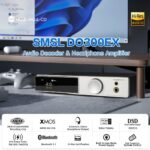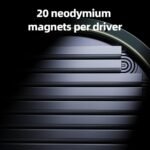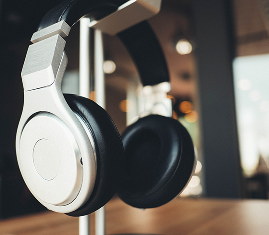If you’ve ever found yourself getting a little bored with your run-of-the-mill music streaming options and looking for something a bit more unique, then you’re in luck. In this article, we’ll be exploring the intriguing world of niche audio formats such as SACD and DVD-Audio. These formats offer a whole new level of audio quality and immersive listening experiences that will make you fall in love with your favorite albums all over again. So, grab your headphones and get ready to dive into the world of high-resolution audio and the future of music listening.
Understanding Niche Audio Formats
In the world of audio, there are several niche formats that cater to audiophiles and music enthusiasts who crave high-quality sound. These formats include SACD, DVD-Audio, Blu-ray Audio, HDCD, vinyl records, FLAC, DSD, and MQA. Each format has its own unique characteristics, advantages, and disadvantages.
Defining Niche Audio Formats
Niche audio formats refer to alternative methods of storing and playing high-quality music that go beyond traditional CD or digital formats. These formats typically offer better sound quality, higher resolution, and unique features that appeal to audiophiles.
Reviewing the Importance of Niche Audio Formats
Niche audio formats play a crucial role in the music industry by providing an option for music enthusiasts who demand the highest quality audio experience. These formats allow artists, producers, and engineers to preserve the integrity of their recordings and deliver them to the listeners in the most accurate and immersive way possible.
Overview of SACD
History and Development of SACD
Super Audio CD, or SACD, was developed by Sony and Philips in the late 1990s as a high-resolution audio format. SACD aimed to provide listeners with a more realistic and immersive listening experience compared to traditional CDs.
Understanding SACD Technology
SACD utilizes Direct Stream Digital (DSD) technology, which samples audio at an incredibly high rate of 2.8 million times per second. This high sampling rate captures more detail and nuances in the music, resulting in superior sound quality.
Advantages and Disadvantages of SACD
One of the main advantages of SACD is its ability to reproduce audio with exceptional clarity, depth, and dynamics. SACD also supports multi-channel surround sound, making it ideal for audio enthusiasts who enjoy a more immersive listening experience. However, SACD players and discs are less common and more expensive than traditional CDs, which can be a drawback for some consumers.
Famous Artists and Albums Released on SACD
SACD has attracted renowned artists and labels who value the format’s superior sound quality. Some notable albums released on SACD include Pink Floyd’s “The Dark Side of the Moon,” Miles Davis’ “Kind of Blue,” and Norah Jones’ “Come Away with Me.”
Understanding DVD-Audio
Understanding DVD-Audio Technology
DVD-Audio, developed by Panasonic, Toshiba, and Warner Music Group, is another high-resolution audio format that emerged in the early 2000s. DVD-Audio aimed to surpass the sound quality of CDs and provide listeners with a more immersive listening experience.
Differences between DVD-Audio and Conventional DVD
While DVD-Audio discs may resemble conventional DVDs, they are not playable on standard DVD players. DVD-Audio requires specific players that support the format to fully enjoy its high-resolution audio capabilities.
Advantages and Disadvantages of DVD-Audio
One major advantage of DVD-Audio is its ability to deliver multi-channel surround sound. It offers a more immersive audio experience by separating instruments and vocals into individual channels. However, DVD-Audio never gained mainstream popularity and struggled with compatibility issues across different players and systems.
Famous Albums Released on DVD-Audio
Though DVD-Audio didn’t gain widespread adoption, some notable albums were released in this format. These include The Eagles’ “Hotel California,” Pink Floyd’s “Wish You Were Here,” and Queen’s “A Night at the Opera.”
Blu-ray Audio
Explaining Blu-ray Audio Technology
Blu-ray Audio is an audio-only format that utilizes the same technology as Blu-ray discs used for high-definition video. This format delivers high-quality audio with uncompressed, lossless sound.
Benefits and Trade-offs of Blu-ray Audio
Blu-ray Audio offers superior sound quality compared to traditional CDs, as it supports high-resolution audio and multi-channel surround sound. However, like SACD and DVD-Audio, Blu-ray Audio players and discs are less common and more expensive than standard CD players.
Renowned Albums in Blu-ray Audio Format
Though Blu-ray Audio has yet to gain widespread adoption, some acclaimed albums have been released in this format. These include Michael Jackson’s “Off the Wall,” Pink Floyd’s “The Wall,” and Fleetwood Mac’s “Rumours.”
HDCD Format
Exploring the HDCD Format
High Definition Compatible Digital (HDCD) is a proprietary audio format developed by Pacific Microsonics. HDCD aims to improve the sound quality of CDs by increasing the dynamic range and reducing noise.
The Pros and Cons of HDCD Format
HDCD offers improved sound quality over traditional CDs, with extended dynamic range and enhanced detail. It achieves this without requiring specialized equipment, making it more accessible to a wider audience. However, HDCD never gained widespread popularity, and the number of HDCD-encoded albums is limited.
Well-known Musicians and Albums Using HDCD
While HDCD is not as prevalent as other niche audio formats, some notable musicians have utilized the format for their albums. Some examples include Emmylou Harris’ “Wrecking Ball,” Nirvana’s “MTV Unplugged in New York,” and Dave Matthews Band’s “Crash.”
Vinyl Records
The Revival of Vinyl Records
Vinyl records, once the dominant music format, experienced a decline with the rise of digital music. However, in recent years, vinyl records have made a significant comeback, attracting a new generation of listeners who appreciate the unique qualities of analog sound.
Understanding the Appeal of Vinyl Records
Vinyl records offer a warm and organic sound that many audiophiles find appealing. The physicality of vinyl records, with their large album artwork and tangible presence, adds to the overall music-listening experience. Additionally, vinyl records often include bonus content, such as lyric sheets and artwork.
Advantages and Disadvantages of Vinyl Records
The advantages of vinyl records include the unique sound quality, the physicality of owning a record collection, and the additional bonus content. However, vinyl records require proper care and maintenance, are susceptible to damage, and can be more expensive than digital or CD formats.
FLAC Format
Introduction to FLAC Audio Format
Free Lossless Audio Codec (FLAC) is a popular niche audio format that allows for high-quality audio compression without any loss in sound fidelity. FLAC files are generally smaller than uncompressed audio files but retain the same audio quality.
Comparing FLAC to Other Lossless Audio Formats
FLAC is widely regarded as one of the best lossless audio formats due to its efficient compression and ability to preserve the original audio quality. Other popular lossless formats include Apple Lossless (ALAC) and WAV.
Benefits and Drawbacks of FLAC Format
FLAC offers the advantage of high-quality audio without consuming excessive storage space. It allows for easy playback on various devices, supporting metadata and album art. However, not all music players and devices support FLAC, which can limit its compatibility.
DSD Audio Format
What is DSD Audio Format?
Direct Stream Digital (DSD) is an audio format that utilizes a pulse-density modulation encoding method to capture audio with high precision and fidelity. DSD is known for its incredibly high sampling rate and its ability to reproduce subtle musical nuances.
Understanding DSD Technology
DSD technology samples audio at an extremely high frequency of 2.8224 million times per second. This high sampling rate captures more detail and nuances in the music, resulting in a more realistic and natural sound.
Pros and Cons of DSD Format
DSD format offers exceptional sound quality, especially in reproducing the natural sound of acoustic instruments. DSD files are often larger than other audio formats, requiring more storage space. Additionally, not all devices and music players support DSD playback.
Popular Artists and Albums in DSD Format
While DSD remains a niche format, some well-known artists have released albums in this format. Notable examples include Michael Jackson’s “Thriller,” Pink Floyd’s “The Division Bell,” and Diana Krall’s “Live in Paris.”
MQA Audio Format
Briefing the MQA Audio Format
Master Quality Authenticated (MQA) is a high-resolution audio format developed by Meridian Audio. MQA captures and reproduces audio with the highest possible quality, aiming to preserve every detail and nuance of the original recording.
Understanding the Technology behind MQA
MQA utilizes a process called “Music Origami” to capture and shrink high-resolution audio files to a smaller size without compromising sound quality. It also includes a “decoded” component that can be unfolded by compatible hardware and software to provide an even higher-resolution playback.
Advantages and Disadvantages of MQA Format
MQA format offers exceptional sound quality, often surpassing that of other high-resolution audio formats. It also provides a convenient way to distribute high-resolution audio over streaming platforms. However, MQA requires specialized hardware and software for full decoding, which can limit its accessibility.
Famous Albums in MQA Format
MQA has gained support from various artists and labels, resulting in the release of several well-known albums in this format. Some examples include Miles Davis’ “Kind of Blue,” Bob Dylan’s “Blood on the Tracks,” and Nirvana’s “Nevermind.”
Comparing Various Niche Audio Formats
Comparing Sound Quality
When it comes to sound quality, each niche audio format has its unique strengths and characteristics. SACD, DVD-Audio, Blu-ray Audio, and DSD formats are known for their high-resolution audio capabilities, capturing more detail and nuances. Vinyl records offer a warm and rich sound that many audiophiles find appealing. FLAC and MQA formats strive to deliver lossless audio, ensuring no quality loss during compression.
Assessing Availability and Price
Availability and price vary for each niche audio format. SACD, DVD-Audio, and Blu-ray Audio discs and players are less common and tend to be more expensive compared to traditional CDs or digital formats. Vinyl records are experiencing a resurgence, with a wide range of available titles, both new and vintage. FLAC and MQA formats are more accessible, with increasing support from online music stores and streaming services.
Understanding Equipment Compatibility
Compatibility is an important consideration when choosing a niche audio format. SACD, DVD-Audio, Blu-ray Audio, and DSD require specific players or equipment to fully enjoy their high-resolution capabilities. vinyl records require turntables and phono preamps, along with proper maintenance. FLAC and MQA formats offer broader compatibility, with support from various software players, streaming platforms, and hardware devices.
In conclusion, niche audio formats like SACD, DVD-Audio, Blu-ray Audio, HDCD, vinyl records, FLAC, DSD, and MQA cater to audiophiles seeking higher sound quality and unique features. Each format offers its own advantages and disadvantages, allowing music enthusiasts to choose the format that best suits their preferences and equipment. Whether it’s the immersive sound of SACD, the warmth of vinyl records, or the convenience of FLAC and MQA, these niche audio formats provide an alternative to standard CD or digital formats, enriching the music-listening experience for those who seek the highest quality audio.










